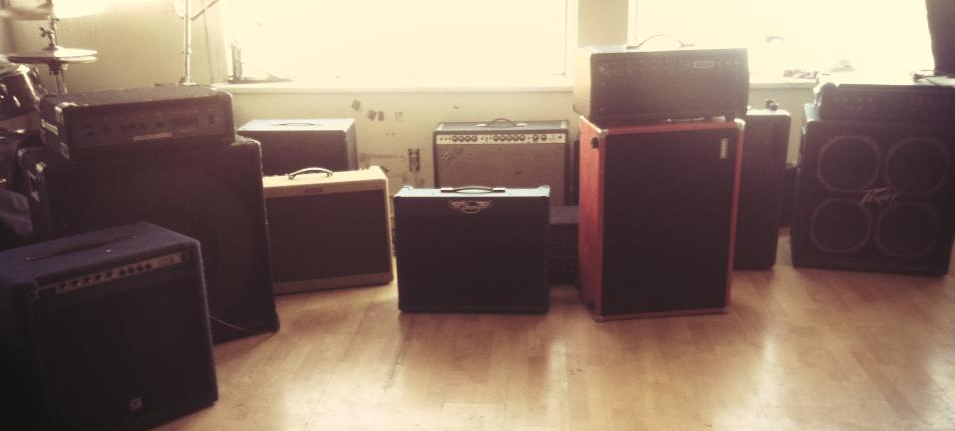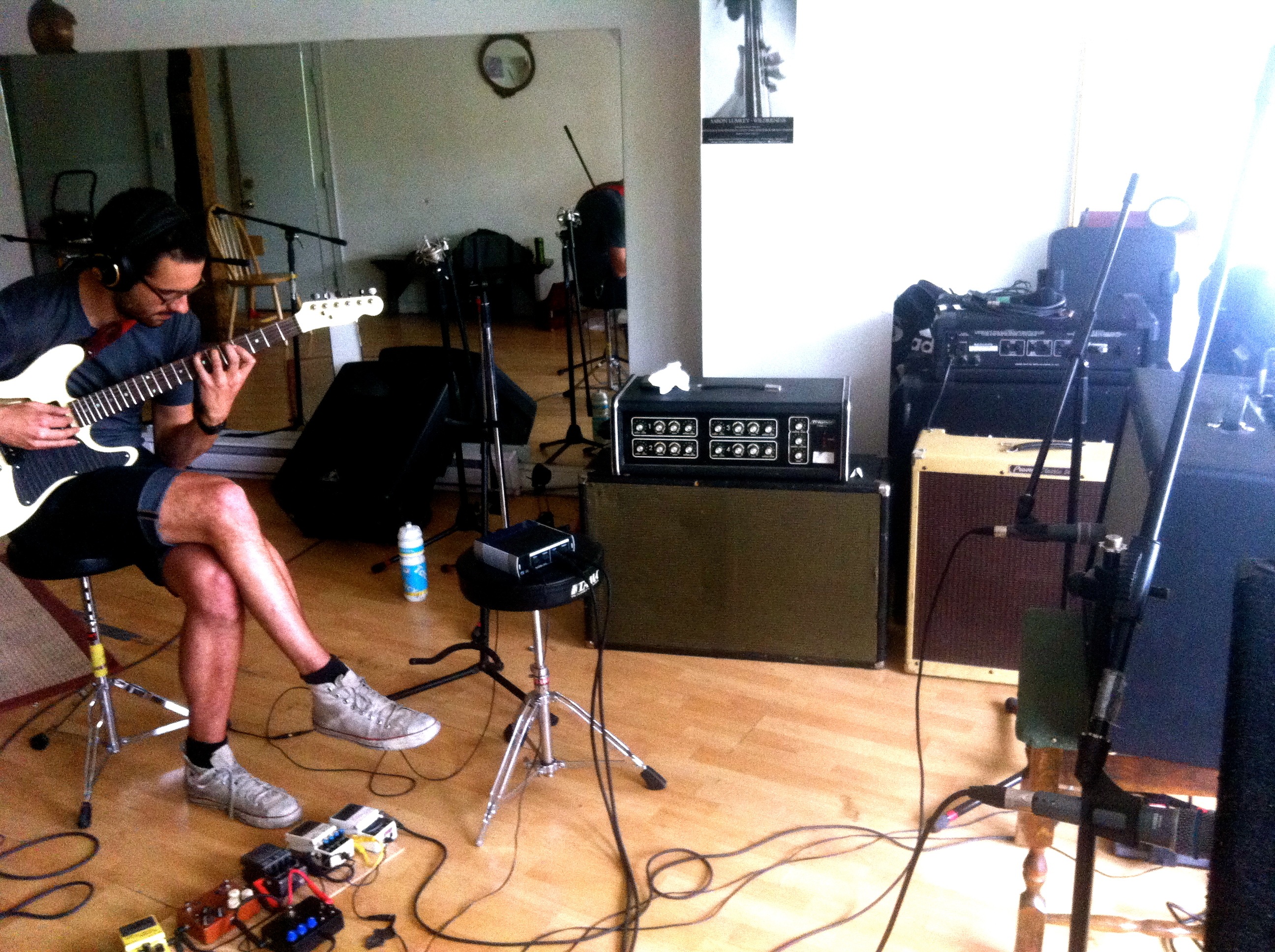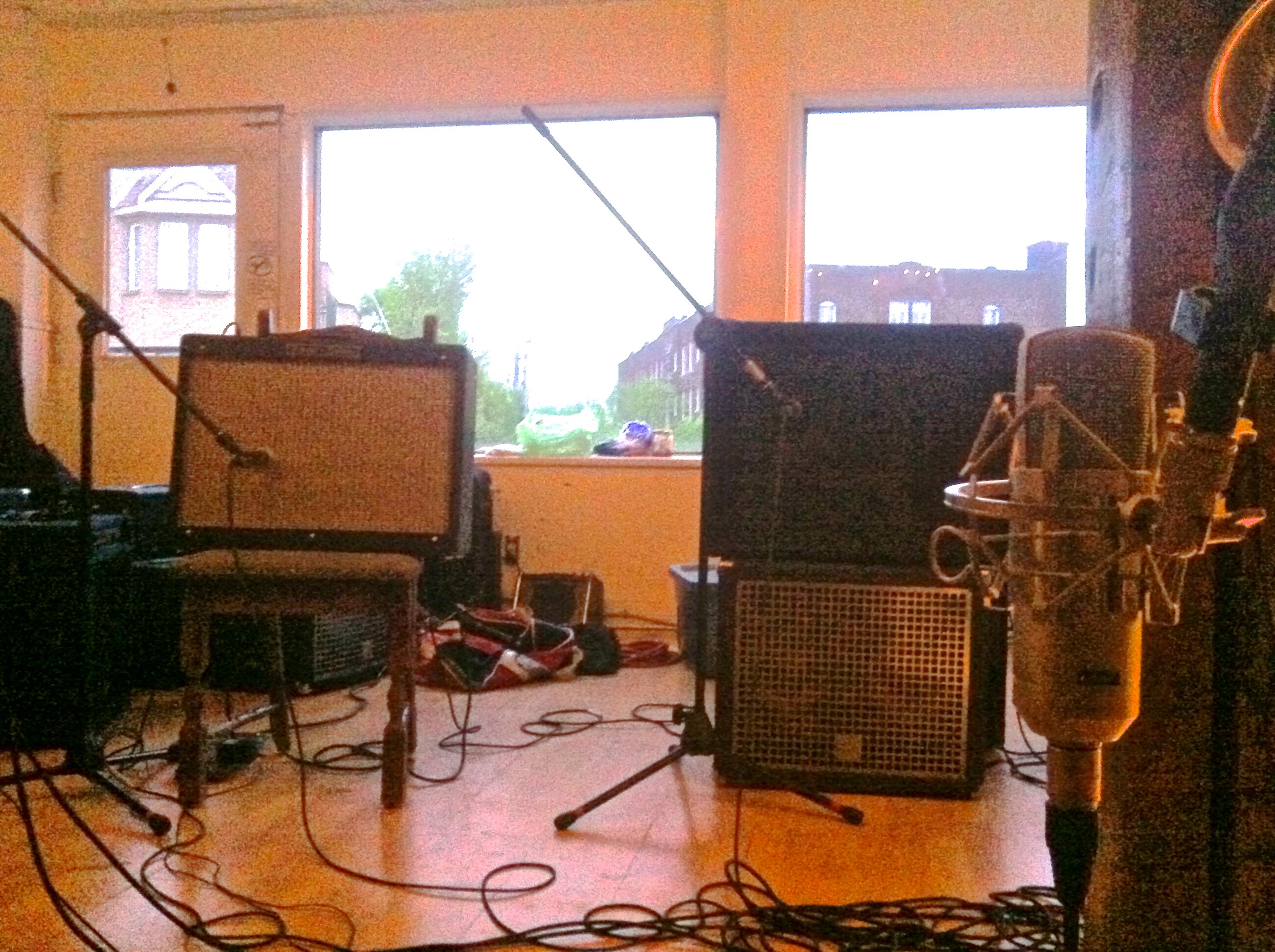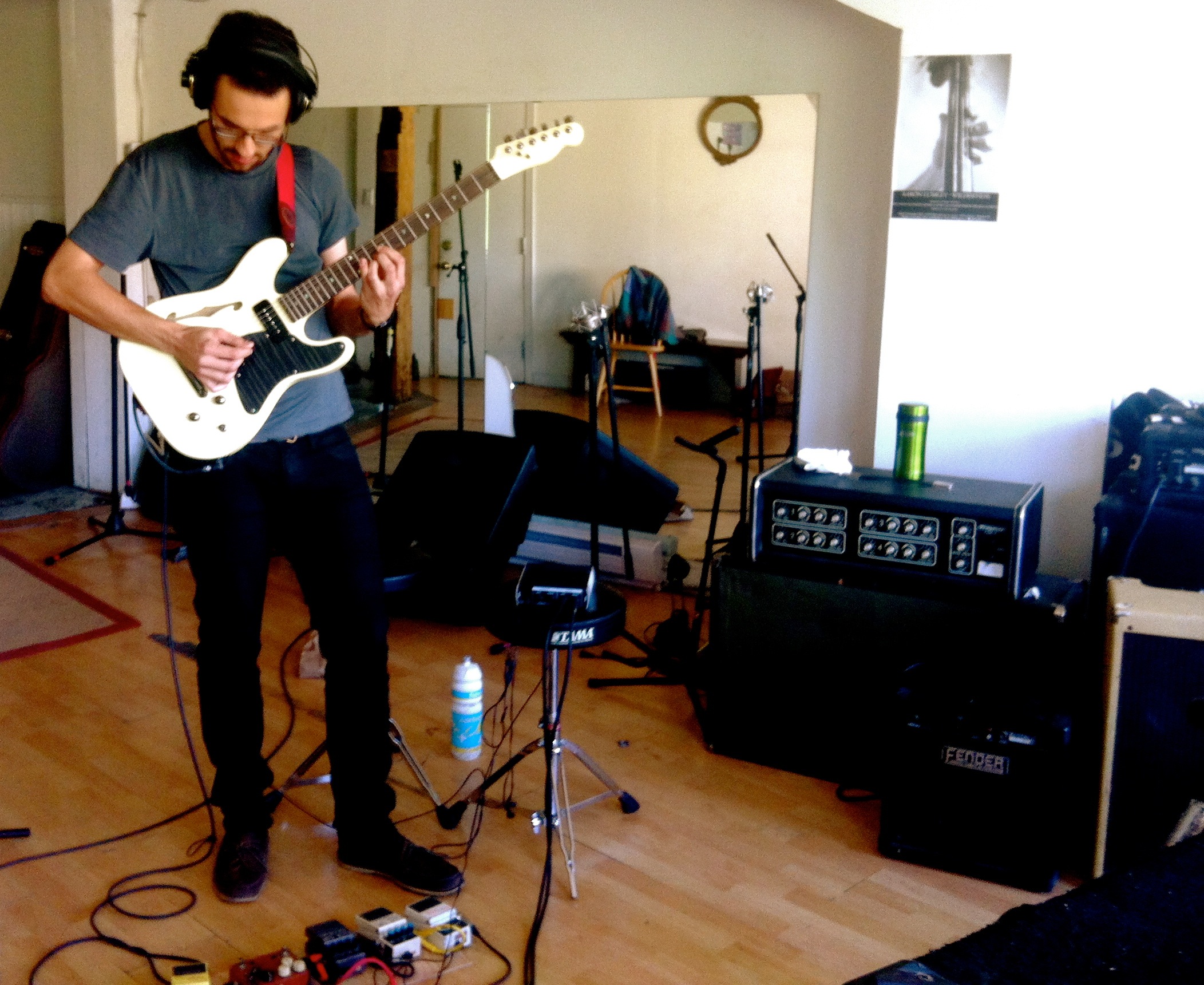
More Debt! Part 3 – Guitars
Electric Guitar is no doubt the bedrock of rock music.
Doing it justice can be tough work, but it’s worth every ounce of effort!
In this, the third instalment of our series focusing on the recording process of Debt’s full length album, it’s time to dive deep into the glorious world of guitar tone.
If you haven’t seen them, check out Part 1 and Part 2!
Guitarists Love Gear
Of all the different kinds of instrumentalists I’ve had the pleasure of meeting, I find that guitarists are often the most gear-obsessed. As one myself, I can certainly say I fall into this category, as does Max Halparin, Debt’s resident Guitar-Slinger.
His set-up consists of a Fender Deluxe Reverb amp, an additional open-back 2×12 cabinet (with Celestion G12H30’s in it, I do believe), and a slew of pedals. Distortion, Fuzz, Delay, Reverb, and more was at his disposal on the floor, as well as the Amp reverb.
Working with both the pedals and the amp settings, we finally tuned a wide range of tones, from subtle to terrifying.

Set up the Setup
We started by getting the amp and cabinet set up. We decided they sounded best when elevated, so we placed them up on chairs. We spaced them reasonably far apart to avoid nasty phase issues, and I got to work with microphones. I grabbed 2 Beta 57’s, placed one infront of the amp and threw the other infront of the cabinet.
I put in my ear plugs, and told Max to Let ‘er Rip!
I fine tuned the position of each of the mics as best I could without listening to them, and then hit record. We listened back, and after a further round of fine tuning we settled on the perfect spot for each mic.
Next, I took one of my Apex 435’s and set it up (a little less scientifically, I’ll admit) in what seemed to be the sweet spot between the two amps.
I swept my Pro Tools pan knobs around to check for any obvious phase issues, and after a little listening, we decided to get started!

Double Awesome
After our experience tracking the demos, we decided we wanted even more intensity, depth and heavy-ness.
The previous guitar sound was big.
This time, we were shooting for Massive.
We decided we’d be double tracking the majority of the guitar parts on the album. For “rhythm guitar” parts especially, a wide panned pair of subtly different takes can bring the intensity to a whole new level.
We also decided to add a few additional guitar overdubs to support some of the lead sections. An extra chord or two alongside a melodic riff never hurt anyone!

It’s all in the Fingers
The most essential part of any great guitar recording is the guitarist.
Tone starts in the fingers, and if they’re not happy, neither will the sounds they make. Obviously, this applies to all instruments and musicians. Keeping people comfortable, happy and excited about the session is one of the most important roles a recording engineer plays. Trying to make a great recording can be an extremely difficult, stressful and frustrating task at times, and it’s important to keep up morale.
I find a few simple things make a huge difference when it comes to managing the mood.
Eating well, taking plenty of breaks, and being a supportive and encouraging listener all contribute to help keep sessions moving in the right direction.
For this reason, we split our Guitar and Vocal tracking over two days. Two five hour sessions can be much more productive and satisfying for a performer than one marathon 10+ hour day.
Next, we’ll talk vocals!